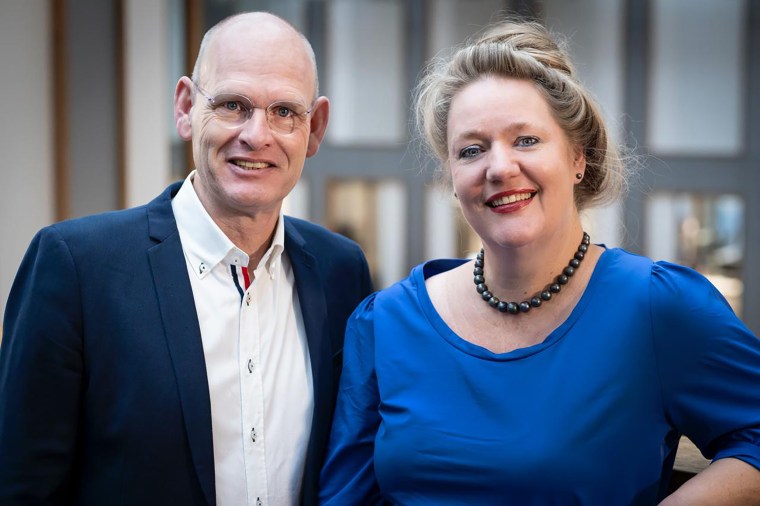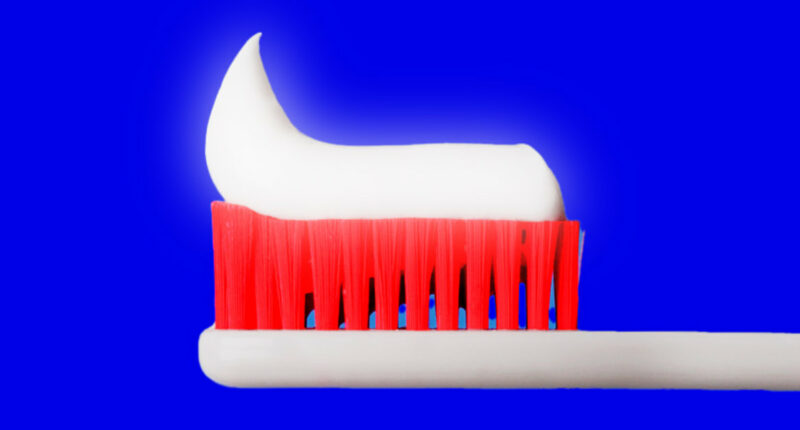Share this @internewscast.com
Few people know more about the best way to clean your mouth than Dagmar Else Slot and Fridus van der Weijden. This Dutch dental duo has authored more than 100 research papers together, and now they’re attempting something especially ambitious: writing the definitive guide to cleaning your teeth and gums.
Slot, a dental hygienist, and van der Weijden, a dentist, have made this guide their life’s mission. They’ve been at it for 15 years, and they’re not done yet.

They say that in their decades of work, they’ve found that people often think they’re doing a good job with their dental hygiene, but in fact it’s quite subpar.
“It’s kind of supervised neglect,” Slot said. “Everybody brushes their teeth, but you probably learned how from your parents, and in the end nobody really learns it right. In almost 100% of cases, there is room for improvement.”
Along with a team of doctoral students, Slot and van der Weijden are combing through thousands of studies to create a science-based dental manifesto answering home-care dental questions:
- Which kind of toothbrush is best?
- What about toothpaste?
- How long should you brush for?
- Does mouthwash really help fight cavities?
Slot, a professor of preventive oral health, and Van der Weijden, a professor emeritus of periodontology, both at the Academic Centre for Dentistry in Amsterdam, decided to undertake this mammoth project after decades of getting peppered with home-care dental questions from patients, colleagues and friends. As scientists, they wanted to respond based on the body of published research, not just their own opinions and observations.
“To be honest, I didn’t have an answer,” van der Weijden said.
He does know that dental health is in a pretty bad state. In the U.S., about 40% of adults age 30 or older have gum disease, according to the Centers for Disease Control and Prevention. About 90% of us between 20 and 64 have had tooth decay, according to the National Institutes of Health.
Misinformation about fluoride
“On social media, influencers are telling people to be fluoride-free and to do oil pulling where you swish your mouth with oil,” Slot said. “They’re not giving advice based on science.”
Best practices matter — especially if you live in a community or state in the U.S. that’s considering banning fluoride in public drinking water, which could lead to an increase in dental problems.
Tooth pain can be miserable
In 2017, there were 2.1 million emergency room visits for dental emergencies, according to the CDC. That doesn’t include visits to the dentist to get a cavity filled or a root canal — and having someone drill in your mouth is never fun.
Bad teeth can be costly
In 2021, Americans who had at least one dental visit that year spent an average of $887 on dental care, according to the federal Agency for Healthcare Research and Quality. The costs don’t stop there: Almost $46 billion is lost in productivity in the U.S. each year because of untreated oral disease, according to the CDC.
Third, your mouth is connected to the rest of your body. Gum disease has been associated with a number of health conditions, including heart disease and diabetes, according to the American Dental Association. A 2016 analysis of periodontal disease research found that gum disease may be linked to 57 chronic conditions, including diabetes, cardiovascular and liver diseases, as well as preterm births.
Slot and van der Weijden said they need another three years or so to complete their magnum opus. In the meantime, they shared their recommended best practices for adult dental care, along with suggestions from two U.S. dental experts: Lancette VanGuilder, president of the American Dental Hygienists’ Association, and Dr. Mia Geisinger, president of the American Academy of Periodontology.
Use an electric toothbrush for two minutes
The experts said you need pretty spectacular technique to make a traditional toothbrush work as effectively as an electric one. They suggested one with a timer, so you’ll brush for the full two minutes. The American Dental Association recommends soft bristles, and the experts said the size and shape of the toothbrush head (rectangular or circle) depends on the size of your mouth and other personal factors.
Use a pea-size amount of toothpaste
More isn’t better here, because excessive toothpaste might trick you.
A mouth full of foam might hide the fact that your gums are bleeding, and that’s an important warning sign you should notice and discuss with your dentist, VanGuilder said. Van der Weijden has another reason not to load up your brush.
“Toothpastes have surfactants — a detergent — which makes your teeth feel smooth, so you have an almost immediate sensation that you’ve cleaned your teeth when probably you haven’t done a good job,” he said.
The American Dental Association recommends only toothpastes that contain fluoride.
For teeth in the back, consider a second smaller brush
If your toothbrush is too big to get to your back teeth, consider buying a child-sized brush to reach them, VanGuilder said. Also, closing your mouth a bit relaxes your jaw muscles and gives you more space back there.
For between teeth, use tiny interdental brushes
“Using floss appropriately is very difficult,” said Slot. “It doesn’t work well in everybody’s hands.” Several studies, including a 2018 review of 22 clinical trials, found that interdental brushes were better than floss or other tools at reducing gum inflammation. Some have rubber bristles and some have nylon bristles. Both are available in drug stores, and these tiny interdental brushes are meant to supplement a regular toothbrush, not replace it.
Should you floss or brush first?
Geisinger, the periodontist, recommends cleaning between your teeth first and then brushing — she says it’s helpful to get the big pieces of gunk out so the brush can get in and do its work.
If you prefer floss, the experts said it generally doesn’t matter if you choose waxed or unwaxed — whichever you like best is fine.
Yes, mouthwash is easy — but be careful
“Many people will pick mouthwash instead of cleaning in between your teeth, and cleaning in between your teeth is really much more beneficial,” Geisinger said. If you do want to use mouthwash along with floss or interdental brushes, she warns that mouthwashes with alcohol can contribute to tooth decay for people with dry mouths.










